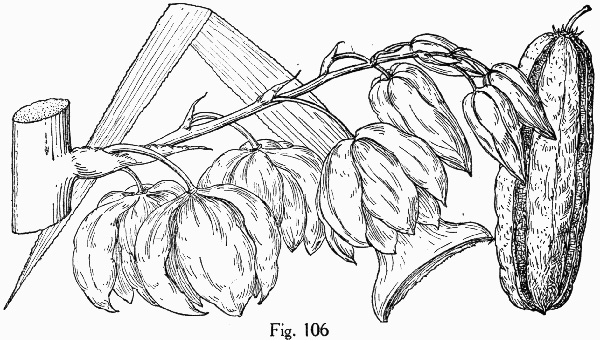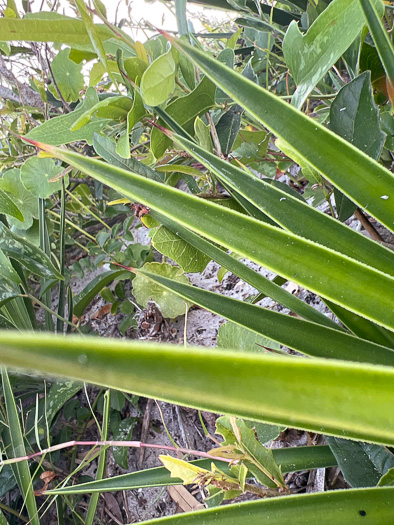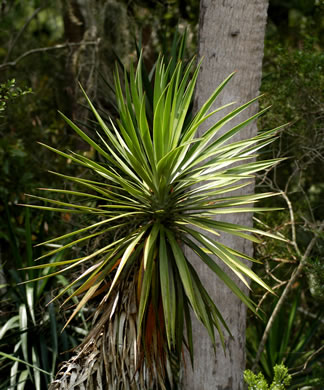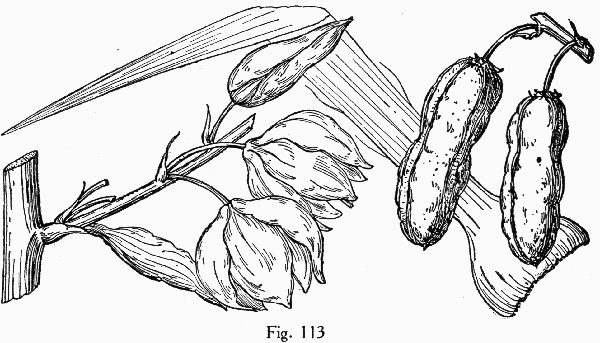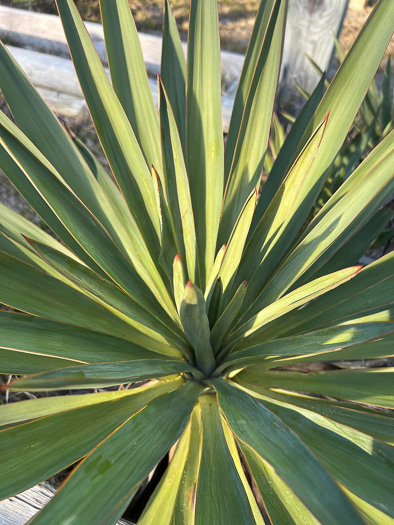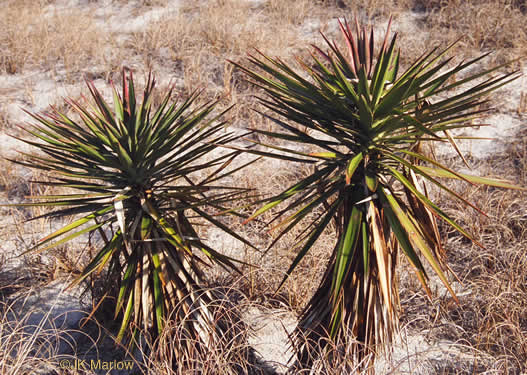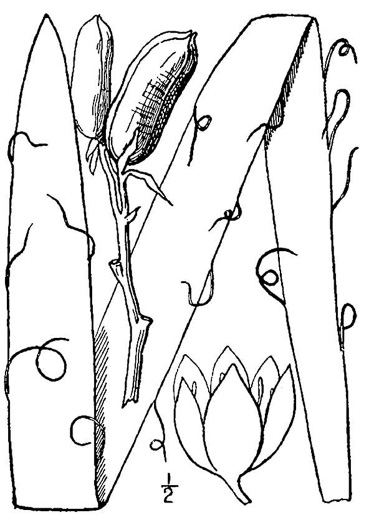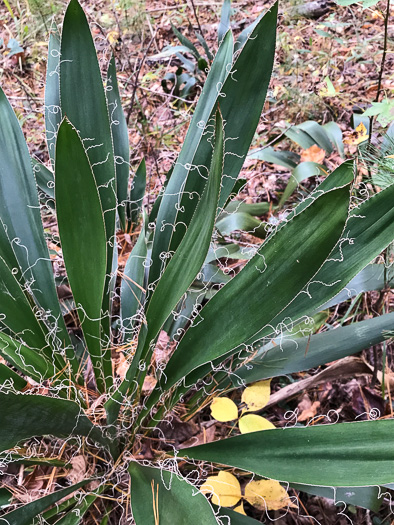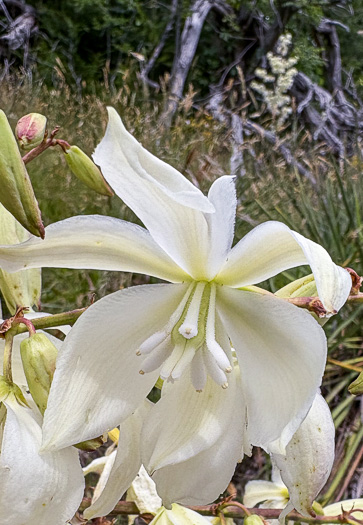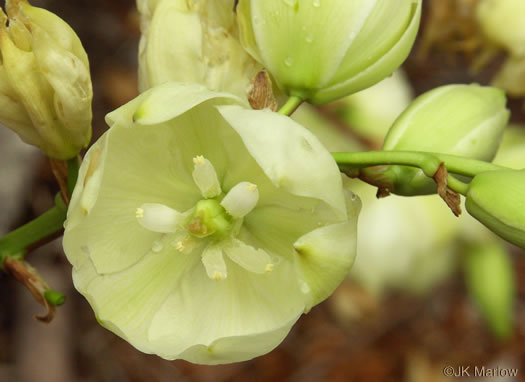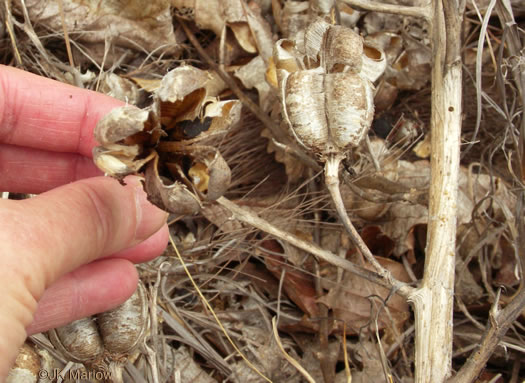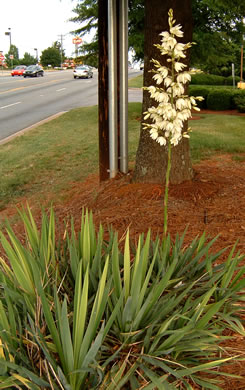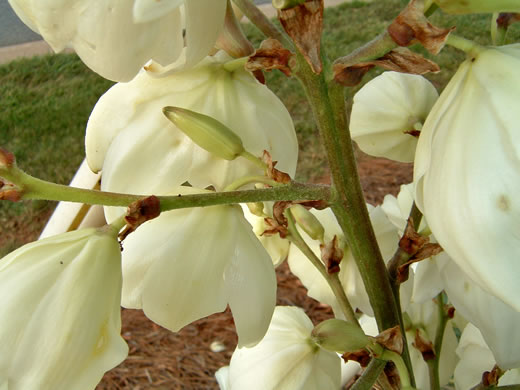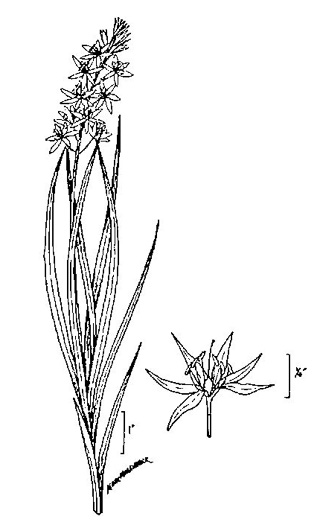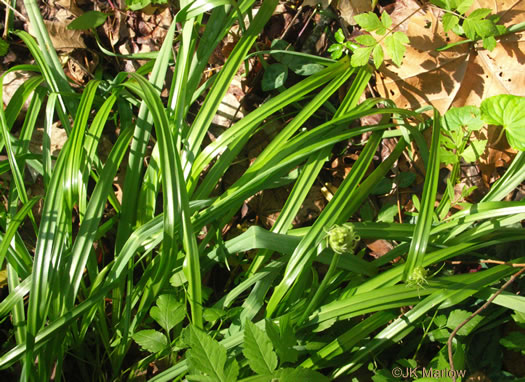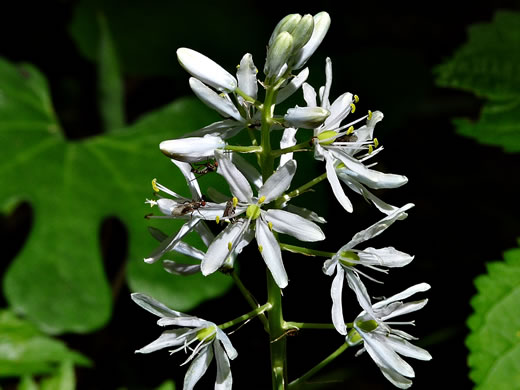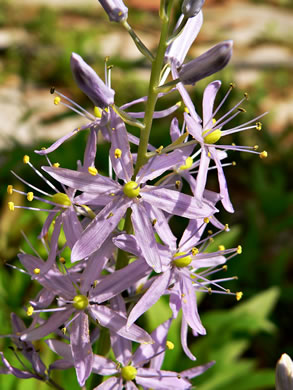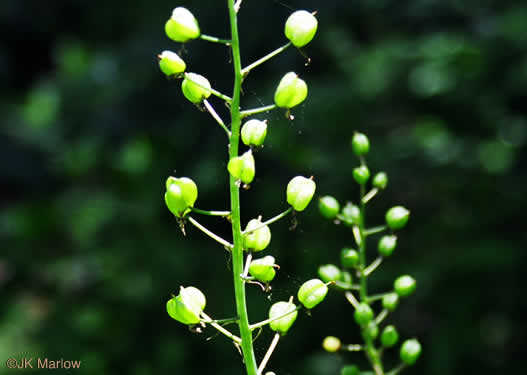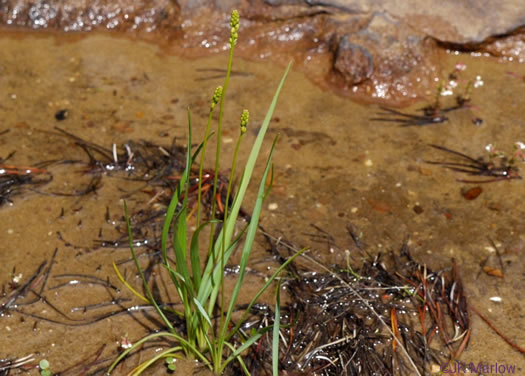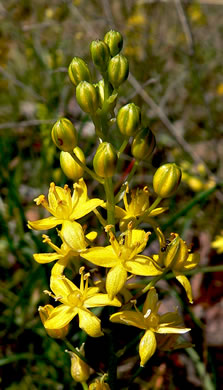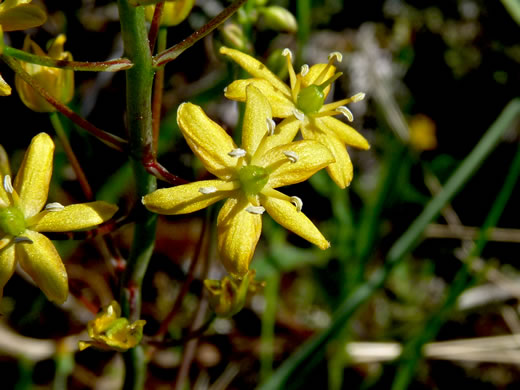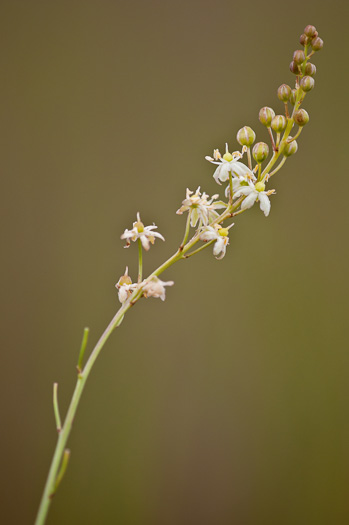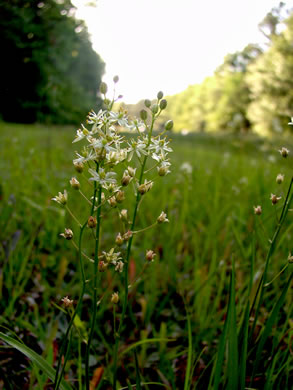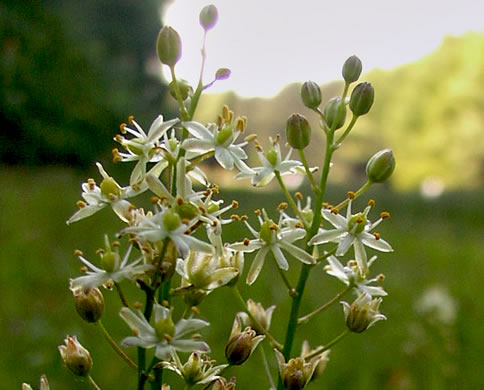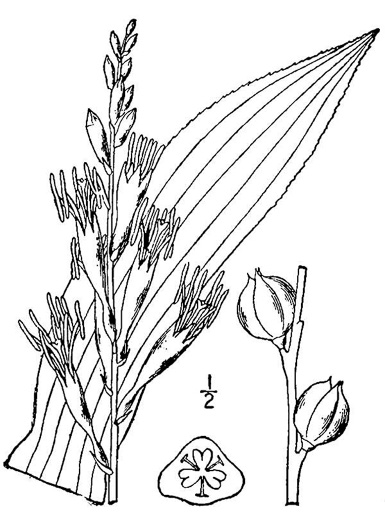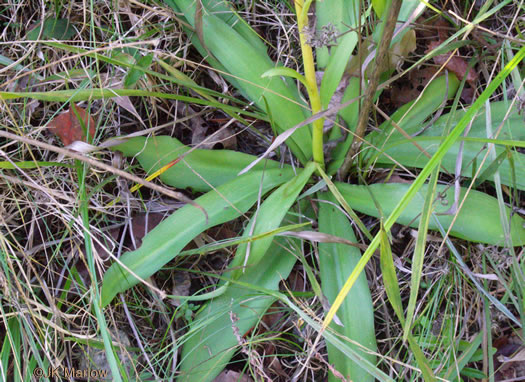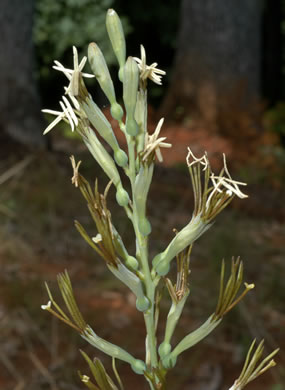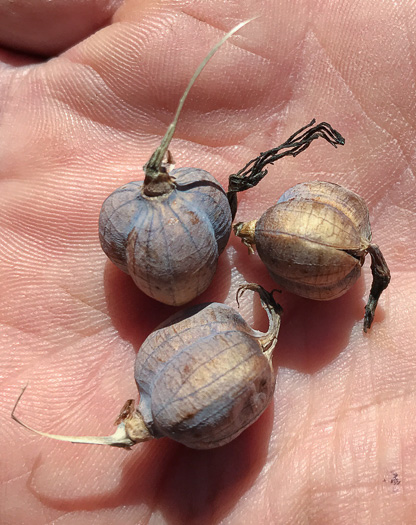Hovering over an image will enlarge it and point out features (works better on desktop than on mobile).
![]() A camera indicates there are pictures.
A camera indicates there are pictures.
![]() A speaker indicates that a botanical name is pronounced.
A speaker indicates that a botanical name is pronounced.
![]() A plus sign after a Latin name indicates that the species is further divided into varieties or subspecies.
A plus sign after a Latin name indicates that the species is further divided into varieties or subspecies.
Most habitat and range descriptions were obtained from Weakley's Flora.
Your search found 11 taxa in the family Agavaceae, Agave family, as understood by Weakley's Flora.

![]()
![]() Common Name:
Spanish Dagger, Aloe Yucca
Common Name:
Spanish Dagger, Aloe Yucca
Weakley's Flora: (4/24/22) Yucca aloifolia FAMILY: Agavaceae
SYNONYMOUS WITH PLANTS National Database: Yucca aloifolia FAMILY: Agavaceae
SYNONYMOUS WITH Vascular Flora of the Carolinas (Radford, Ahles, & Bell, 1968): Yucca aloifolia 041-12-001 FAMILY: Liliaceae
Habitat: Dunes; also cultivated and persisting for decades at old homesteads, dump sites, and along railroads
Uncommon in Coastal Plain (waifs in NC Piedmont)
Native to the Carolinas & Georgia

![]()
![]() Common Name:
Mound-lily Yucca, Spanish Bayonet
Common Name:
Mound-lily Yucca, Spanish Bayonet
Weakley's Flora: (4/24/22) Yucca gloriosa FAMILY: Agavaceae
SYNONYMOUS WITH PLANTS National Database: Yucca gloriosa FAMILY: Agavaceae
SYNONYMOUS WITH Vascular Flora of the Carolinas (Radford, Ahles, & Bell, 1968): Yucca gloriosa 041-12-002 FAMILY: Liliaceae
Habitat: Dunes, shell middens, also regularly cultivated and often persistent or weakly escaped around old homesites inland
Uncommon in Coastal Plain of GA & SC, rare in NC
Native to the Carolinas & Georgia

Common Name: Curve-leaf Yucca
Weakley's Flora: (2/10/25) Yucca recurva FAMILY: Agavaceae
(?) PLANTS National Database: Yucca recurvifolia FAMILY: Agavaceae
Habitat: Dunes, dry sandy soils, flatwoods, upland forests, disturbed areas; widely cultivated
Rare
Native to South Carolina & Georgia & possibly North Carolina

![]()
![]() Common Name:
Beargrass, Spoonleaf Yucca, Curlyleaf Yucca
Common Name:
Beargrass, Spoonleaf Yucca, Curlyleaf Yucca
Weakley's Flora: (4/24/22) Yucca filamentosa FAMILY: Agavaceae
SYNONYMOUS WITH PLANTS National Database: Yucca filamentosa FAMILY: Agavaceae
SYNONYMOUS WITH Vascular Flora of the Carolinas (Radford, Ahles, & Bell, 1968): Yucca filamentosa var. filamentosa 041-12-003a FAMILY: Liliaceae
Habitat: Woodlands, forests, dunes, sandhills, roadsides, disturbed areas. Wooded margins of granite flatrocks and similar fire-shadow sites in sandhills. Also occasionally in coastal grasslands
Common
Native to the Carolinas & Georgia

![]()
![]() Common Name:
Weakleaf Yucca
Common Name:
Weakleaf Yucca
Weakley's Flora: (4/24/22) Yucca flaccida FAMILY: Agavaceae
SYNONYMOUS WITH PLANTS National Database: Yucca flaccida FAMILY: Agavaceae
SYNONYMOUS WITH Vascular Flora of the Carolinas (Radford, Ahles, & Bell, 1968): Yucca filamentosa var. smalliana 041-12-003b FAMILY: Liliaceae
Habitat: Thin soils around rock outcrops, woodlands, roadsides, disturbed areas
Uncommon in GA, rare in the Carolinas
Native to parts of the Carolinas & Georgia

![]()
![]() Common Name:
Wild Hyacinth, Eastern Camas Lily, Quamash Lily
Common Name:
Wild Hyacinth, Eastern Camas Lily, Quamash Lily
Weakley's Flora: (4/24/22) Camassia scilloides FAMILY: Agavaceae
SYNONYMOUS WITH PLANTS National Database: Camassia scilloides FAMILY: Liliaceae
SYNONYMOUS WITH Vascular Flora of the Carolinas (Radford, Ahles, & Bell, 1968): Camassia scilloides 041-27-001 FAMILY: Liliaceae
Habitat: Circumneutral prairies, oak savannas, calcareous glades, woodlands, and forests; eastwards relictual and scattered in circumneutral soils, in GA, VA, and WV on limestone, in NC on slopes and natural levees in rich alluvium along the Roanoke River, in SC over gabbro
Rare
Native to the Carolinas & Georgia

![]() Common Name:
Yellow Sunnybell
Common Name:
Yellow Sunnybell
Weakley's Flora: (4/14/23) Schoenolirion croceum FAMILY: Agavaceae
SYNONYMOUS WITH PLANTS National Database: Schoenolirion croceum FAMILY: Liliaceae
SYNONYMOUS WITH Vascular Flora of the Carolinas (Radford, Ahles, & Bell, 1968): Schoenolirion croceum 041-29-001 FAMILY: Liliaceae
Habitat: Wet pine savannas, bogs, seepage slopes, seepages on granite flatrocks, limestone glades
Uncommon in GA Piedmont & GA Coastal Plain, rare in Mountains, rare in SC (historically in NC, but not recently seen)
Native to the Carolinas & Georgia

![]() Common Name:
White Sunnybell
Common Name:
White Sunnybell
Weakley's Flora: (4/14/23) Schoenolirion albiflorum FAMILY: Agavaceae
SYNONYMOUS WITH PLANTS National Database: Schoenolirion albiflorum FAMILY: Liliaceae
Habitat: Wet pinelands, cypress depressions, Hypericum depressions, wet pine savannas, and hammocks
Rare in GA
Native to Georgia

![]() Common Name:
Texas Sunnybell
Common Name:
Texas Sunnybell
Weakley's Flora: (4/14/23) Schoenolirion wrightii FAMILY: Agavaceae
SYNONYMOUS WITH PLANTS National Database: Schoenolirion wrightii FAMILY: Liliaceae
Habitat: Saline prairies, seepage over sandstone, Catahoula barrens; "rocky barrens in the Post Oak region near College Station, with a few disjunct populations on the Catahoula Formation of southeast Texas" (Carr 2016). This species occurs in habitats similar to those of S. croceum in the Alabama plateau region and in the western part of its range
Native to Alabama

Common Name: Blue Plantain-lily
Weakley's Flora: (4/24/22) Hosta ventricosa FAMILY: Agavaceae
SYNONYMOUS WITH PLANTS National Database: Hosta ventricosa FAMILY: Liliaceae
Habitat: Widely planted as a shade ornamental and occasionally escaping in disturbed areas
Rare
Non-native: China

![]()
![]() Common Name:
Eastern Agave, Eastern False-aloe, Rattlesnake-master, American Aloe
Common Name:
Eastern Agave, Eastern False-aloe, Rattlesnake-master, American Aloe
Weakley's Flora: (2/10/25) Manfreda virginica ssp. virginica FAMILY: Agavaceae
SYNONYMOUS WITH PLANTS National Database: Manfreda virginica FAMILY: Agavaceae
SYNONYMOUS WITH Vascular Flora of the Carolinas (Radford, Ahles, & Bell, 1968): Agave virginica 044-08-001 FAMILY: Amaryllidaceae
Habitat: Granite flatrocks, diabase glades, limestone and dolomite barrens and glades, xeric woodlands over mafic or calcareous rocks, prairies, sandhill woodlands, open pine forests, dry roadbanks
Uncommon in GA & SC, rare in NC
Native to the Carolinas & Georgia
Your search found 11 taxa. You are on page PAGE 1 out of 1 pages.

